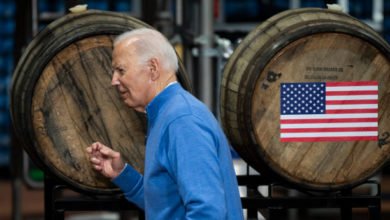Frank Knight’s “Risk, Uncertainty and Profit” 100 Years Later
In Risk, Uncertainty and Profit, published in 1921, economist Frank Knight (1885-1972) sought to solve a riddle: according to economic theory, under conditions of perfect competition profits in excess of the normal return on capital should be competed away. Yet, such profits were commonplace in the actual American economy. How could theory be reconciled with reality?
The Book
Knight began his work by critiquing several existing theories of profit. One, the “risk theory of profit,” such as that put forward by F. B. Hawley in 1893, said that profits were the reward for risk and is still encountered in business classes today.
For Knight this could not be right. A risk can be assigned a probability, “either by calculation a priori” – we know from the nature of a six-sided dice that that the probability of rolling any number is 1 in 6 – “or by the application of statistical methods to past experience” – the odds of a warehouse burning down can be calculated by investigating past instances of warehouses burning down. In both cases, however, “the burden of bearing the risk can be avoided by the payment of a small fixed cost limited to the administrative expense of providing insurance.” This premium becomes part of a firm’s costs so such risks cannot be the source of profit.
“The key to the whole tangle,” Knight wrote, “will be found to lie in the notion of risk or uncertainty and the ambiguities concealed therein.” For Knight, “risk” means “in some cases a quantity susceptible of measurement” – such as the dice roll or burning warehouse – “while at other times it is something distinctly not of this character.” This latter description he termed uncertainty (now known as Knightian Uncertainty), which is “not susceptible to measurement and hence to elimination” by insurance. “It is this true uncertainty,” Knight wrote,
“which by preventing the theoretically perfect outworking of the tendencies of competition gives the characteristic form of ‘enterprise’ to economic organization as a whole and accounts for the peculiar income of the entrepreneur.”
“Take as an illustration any typical business decision,” Knight explained.
“A manufacturer is considering the advisability of making a large commitment in increasing the capacity of his works. He ‘figures’ more or less on the proposition, taking account as well as possible of the various factors more or less susceptible of measurement, but the final result is an ‘estimate’ of the probable outcome of any proposed course of action. What is the ‘probability’ of error (strictly, of any assigned degree of error) in the judgment? It is manifestly meaningless to speak of either calculating such a probability a priori or of determining it empirically by studying a large number of instances. The essential and outstanding fact is that the ‘instance’ in question is so entirely unique that there are no others or not a sufficient number to make it possible to tabulate enough like it to form a basis for any inference of value about any real probability in the case we are interested in. The same obviously applies to [most] conduct and not to business decisions alone.”
While the probability of rolling a six can be deduced from the nature of the dice and that of a warehouse burning down can be inferred from actuarial analysis of warehouse fires, the probability that a new product, service, or method of production will be successful cannot be so quantified because they are relatively unique instances. While all honest dice are the same and warehouses can be grouped into those with similar characteristics, the same cannot be done for many business decisions. By acting in such circumstances of uncertainty, entrepreneurs earn their profits.
Risk, Uncertainty and Profit was well received. Kenneth Boulding noted the book’s “distinctly ‘Austrian’ twist” and it became, according to Friedrich von Hayek, “and for many years continued to be, one of the most influential textbooks on economic theory, although it had not been designed as such.”
Frank Knight, the Man
Knight himself defied easy categorization. He is often cited as a founder of the Chicago School of economics, but, while certain themes taken up by post-war Chicago economists like Milton Friedman and George Stigler – empiricism and a monetary explanation for the Great Depression, for example – are found in the work of Knight and colleagues such as Jacob Viner, the earlier Chicagoans were a more eclectic bunch. Too eclectic to form a “school.”
But without Knight there would not have been a Chicago School. The interwar period was a turbulent time economically and new ideas swept the profession. Knight fought most of them. He refuted Pigou’s notion that ‘negative externalities’ necessitated government intervention. He feuded with Hayek, dismissing his theory of the business cycle. He attacked Joan Robinson and Edward Chamberlin’s theories of monopolistic competition.
More importantly, he was an outspoken opponent of Keynesianism, the school of economics pioneered by John Maynard Keynes (1883-1946) that fundamentally changed the theory and practice of macroeconomics.
Paul Samuelson, a student of Knight’s at Chicago in the 1930s, recalled the impact of Keynes’ ideas:
“The General Theory caught most economists under the age of 35 with the unexpected virulence of a disease first attacking and decimating an isolated tribe of South Sea islanders. Economists beyond 50 turned out to be quite immune to the ailment. With time, most economists in- between began to run the fever, often without knowing or admitting their condition.”
Knight was uninfected. In a review of The General Theory published in 1937, Knight noted and brusquely dismissed Keynes’ argument that, instead of markets tending towards full employment, “a large amount of unemployment, involuntary and not due to friction, is characteristic of the equilibrium position.”
The General Theory, Knight wrote, “requires extensive re-interpretation and integration with a general theory running in terms of equilibrium with full employment, before it can be accepted as sound or useful.”
Keynes’ characterization of the classical economics he opposed were “the sort of caricatures which are typically set up as straw men for purposes of attack in controversial writing.” “On the other hand,” Knight continued “many of Mr. Keynes’s own doctrines are, as he would proudly admit, among the notorious fallacies to combat which has been considered a main function of the teaching of economics.”
A 1950 Forbes article on American academic economists noted that Keynes “swept the profession, excepting Chicago” and much of this was because of Knight, who Forbes dubbed the “dean of anti-Keynesian, orthodox, classical economists.” He told a meeting of the American Economic Association in the 1950s: “If there’s anything I can’t stand it’s a Keynesian and a believer in monopolistic competition.”
As the Chicago School took its more familiar form after the war, Knight continued to defy easy categorization, but he always erred on the side of liberalism. In 1948, the iconoclastic Knight summed up his view thus:
“I believe that individualism must be the political philosophy of intelligent and morally serious men…It is my conviction that any great extension of state action in economics is incompatible with political liberty, that ‘control’ will call for more control and tend to run into complete regimentation…and finally into absolutism, with or without a destructive struggle for power.”
Content syndicated from Fee.org (FEE) under Creative Commons license.




